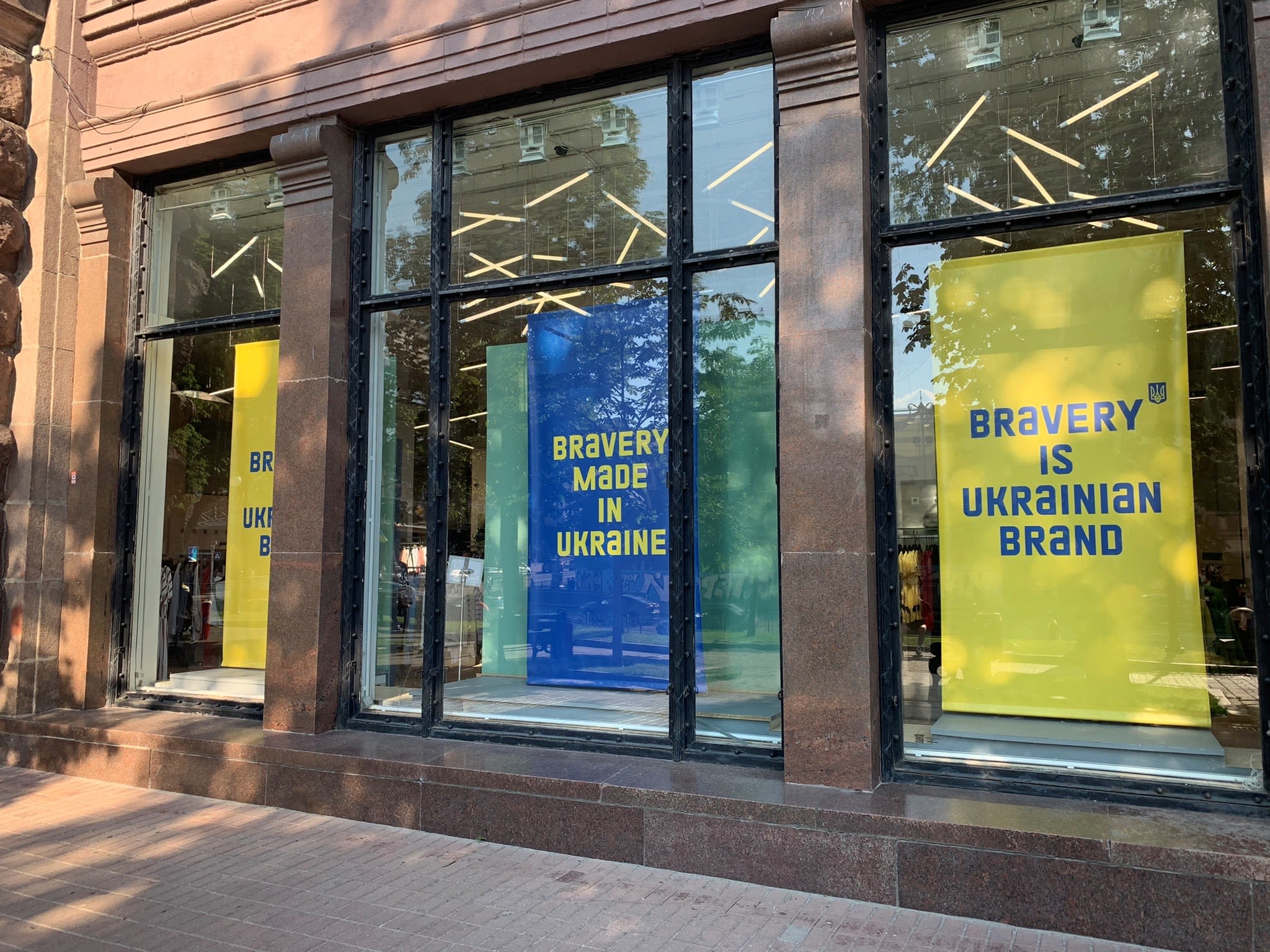Amid the Destruction, Art Endures in Ukraine
Far from being silenced by the war, Ukraine’s creative industries have evolved under the most adverse circumstances

The war in Ukraine has disrupted all parts of society and economy and the creative industries are no exception. Yet in the face of extreme adversity Ukrainian artists continue to create, reach new audiences, support the country’s economy, and lift the people’s spirit. For some, the war is transforming what they are choosing to create. An etch artist, a fashion photographer, and a folk artist discussed their journeys of adaptation, transformation, and resilience with IFC’s Kateryna Chechel, a Kyiv native who evacuated to Vienna after Russia invaded Ukraine. Together with her colleagues from IFC’s Kyiv office, she helped organize an exhibition of Ukrainian art at the IFC office in Vienna.
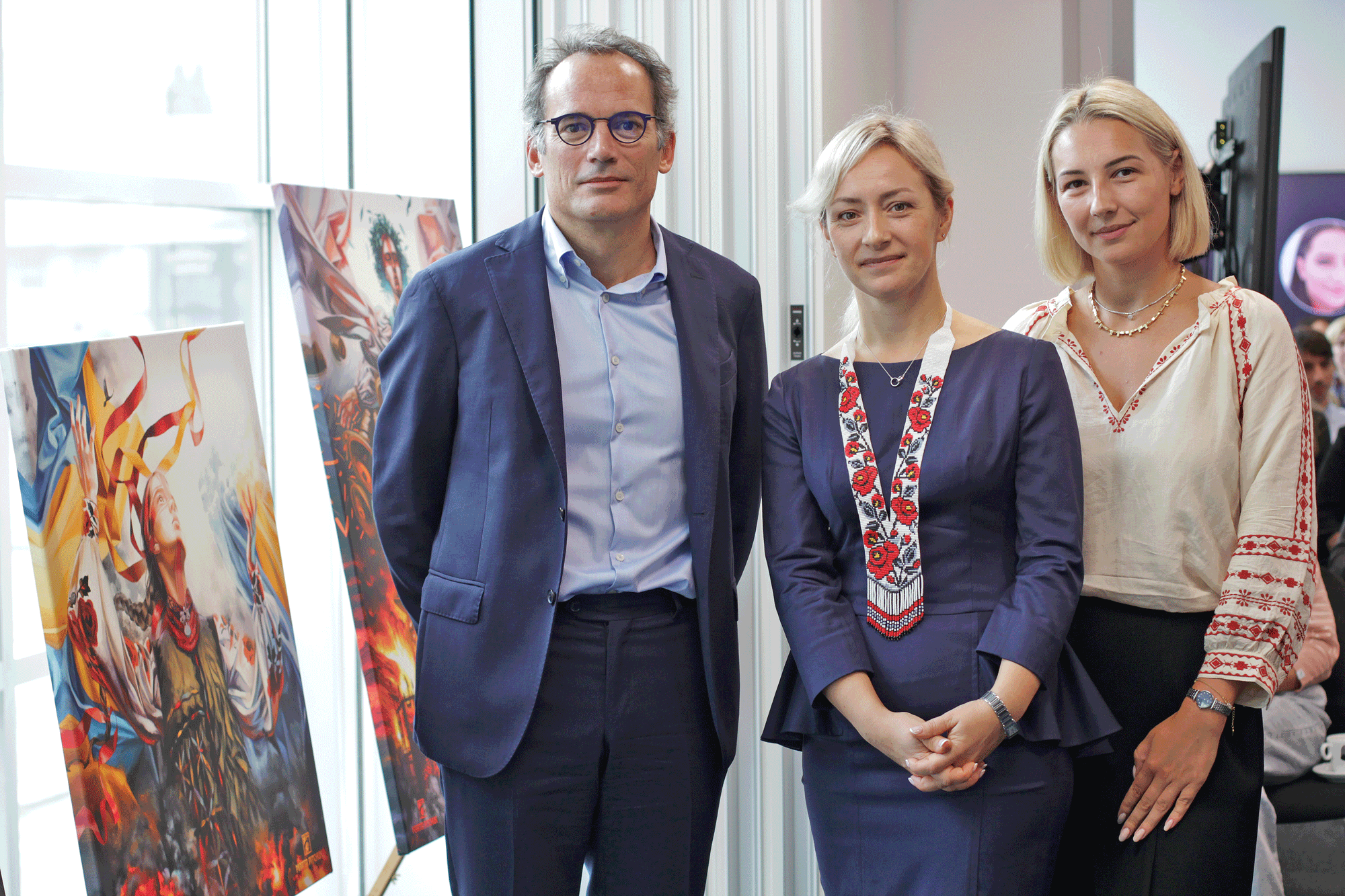
IFC's Alfonso Garcia Mora, Regional Vice President, Europe, Latin America and the Caribbean, Kateryna Onul, Regulatory and Policy Lead at IFC’s Global Food Safety Advisory and Kateryna Chechel, Communications Consultant for Ukraine and Moldova at the Ukraine art exhibition in IFC Office in Vienna. Photo: IFC
IFC's Alfonso Garcia Mora, Regional Vice President, Europe, Latin America and the Caribbean, Kateryna Onul, Regulatory and Policy Lead at IFC’s Global Food Safety Advisory and Kateryna Chechel, Communications Consultant for Ukraine and Moldova at the Ukraine art exhibition in IFC Office in Vienna. Photo: IFC
Though Ukraine is better known globally for its grain and food supplies than its art, its creative industries have been flourishing in recent years. There are now some 200 public and private museums in the country along with many galleries, underground artist-run spaces, creative hubs, and art residences. The art industry generated €760 million in 2021 and employed some 200,000 people in full-time equivalent jobs, excluding freelancers.
After Russia invaded last February, while more than eight million Ukrainians fled to neighboring countries, many of the country’s artists chose to stay. The war, far from suppressing their creativity, has propelled them onward and taken their art in new directions. Each week, I am noticing new artwork, exhibitions, and creative projects. To learn more, I interviewed three Ukrainian artists who, each in their unique way, are showing the reality of war for millions in Ukraine, while serving as living testament to how creativity always manages to find a path, whatever the obstacles.
Angela
Etching or eau forte is a technique of printed graphics in which artists use a chemical reaction of a metal with an acid. Angela Kuschyk discovered her talent in the artform from childhood, her works often depicting dramatic scenes and grotesque figures. In the late 1990s, she would often exhibit and sell her art along Andrew’s Descent, a steep-sloped quarter in downtown Kyiv dubbed the city’s Montmartre or Soho, where artists and craftspeople display their creations and wares.
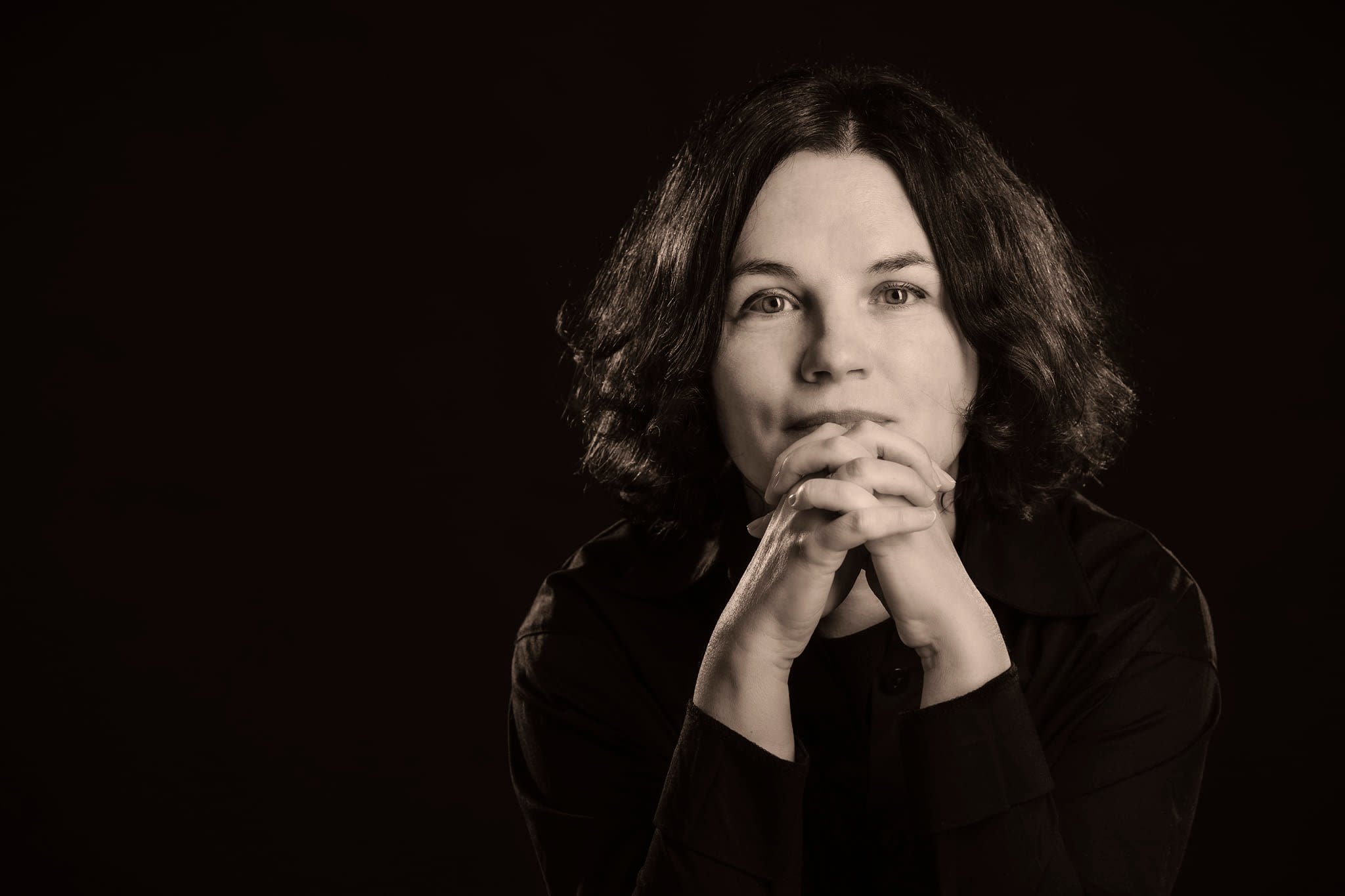
Portrait of Angela Kuschyk. Photo: Angela Kuschyk
Portrait of Angela Kuschyk. Photo: Angela Kuschyk
Before the war in Ukraine, she went through the civil war in Ethiopia, where she lived for more than two years with her husband. “This period was a turning point in my art life,” Angela said. “In 2020, in Africa, I featured the pilgrimage center "Lalibela" in the very heart of the country.” Two years later, she was once again at the center of a devastating war, this time in her home country, Ukraine.
On the night of February 23, 2022, as Russian missiles exploded a few kilometers from her house, Angela was, like all Ukrainian artists, instantly plunged into shock and paralysis. “For about three to four weeks nobody did anything,” she said. “But then, when I felt I couldn’t endure the pain anymore, I came back to the canvas to give voice to my terrible pain and also incredible pride for Ukrainians.”
When I looked at the first drawing she had made since the war, I felt a ringing in my ears. She suggested it was because I am Ukrainian and, like her, experienced post-invasion air raid sirens cutting through the morning calm in Kyiv. She was right — the picture was titled ‘Ukraine’s Kyiv and the air raid alert.’ Over the past year, Angela has held exhibitions in Germany, Ireland, and Poland. She donates most of the income she receives to charities in Ukraine. Given the horrors she has seen, Angela said she cannot treat what she does as a regular job: “I will continue painting until everyone is aware of the humanitarian catastrophe in Ukraine.”
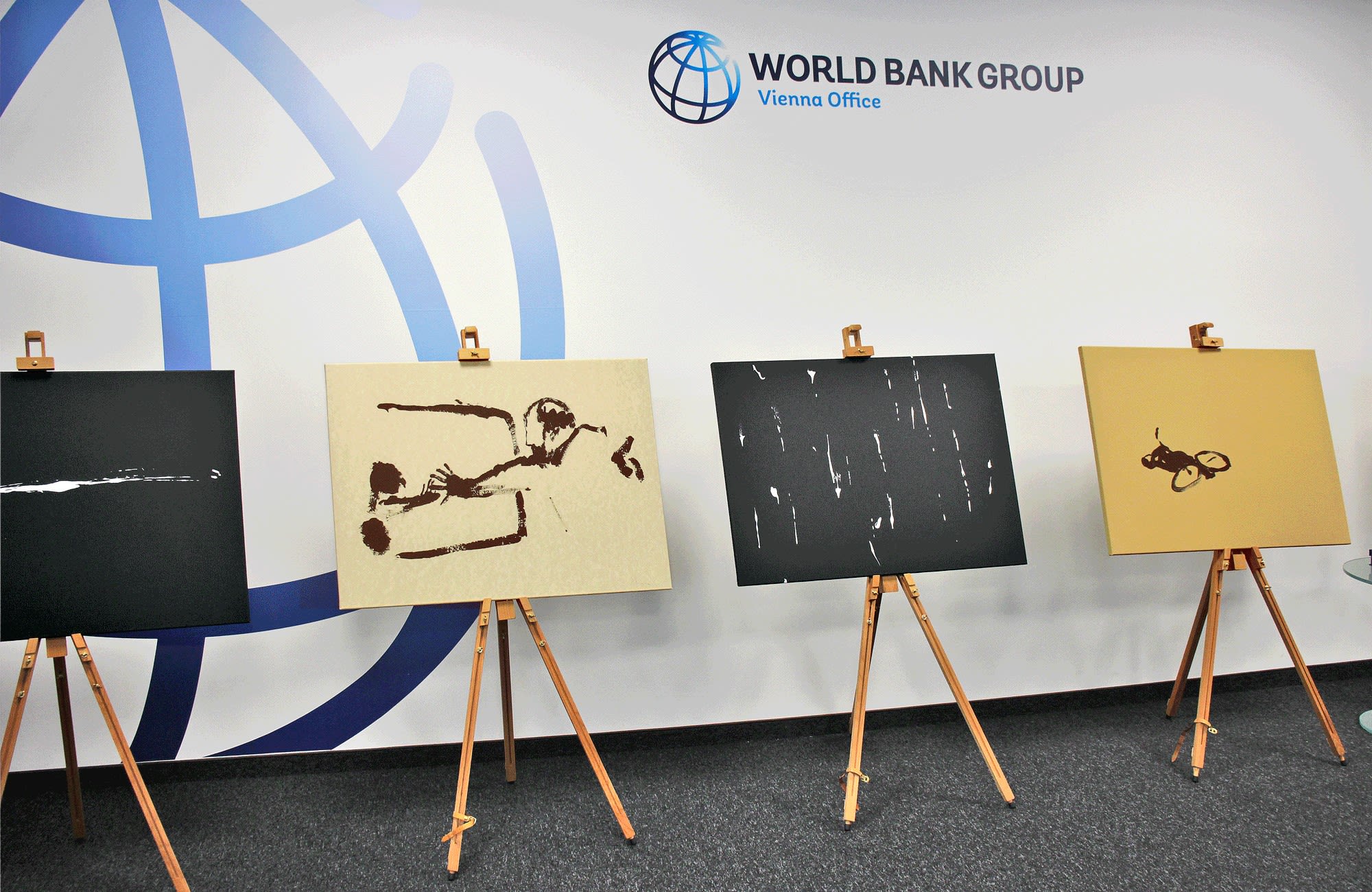
Marta
The ‘Motanka’ is a traditional Ukrainian doll that is both a toy and a talisman or good luck charm, symbolizing continuity between generations. Artist Marta Pitchuk, who comes from the city of Ivano-Frankivsk in western Ukraine, has incorporated the Motanka into her painting while adding a novel twist. “Traditionally the Motankas were made with no eyes so that the spirit of a living being could fly into them,” she explained. “The Motankas I paint are not objects, rather they are living females with their own personalities, features, thoughts, and views. They are an embodiment of the past that comes to life on canvas.”
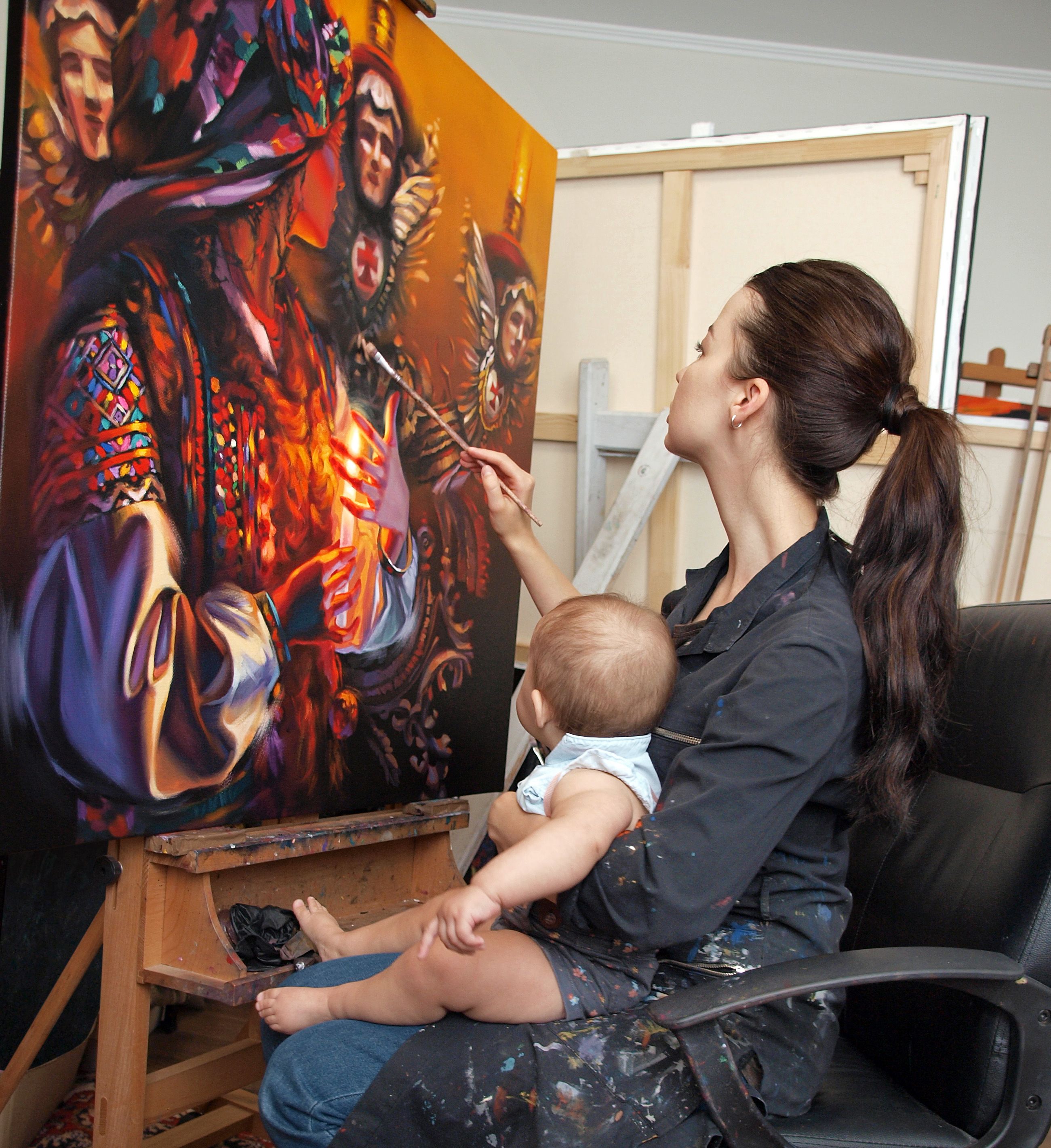
Marta Pitchuk and her child in the art studio. Photo: Marta Pitchuk
Marta Pitchuk and her child in the art studio. Photo: Marta Pitchuk
Before the war, Marta offered some of her artworks for sale, keeping most for domestic and foreign exhibitions. Over the past year, she has continued to create and has been expanding her output by forging creative partnerships with folk fashion designers aimed at helping people who are impacted by the war. She has held four charity auctions on social media, the proceeds from which were donated to support humanitarian efforts. Through a partnership with the Ukrainian folk fashion designer Lyubtsya Chernikova, Marta has been producing silk scarves which feature a motif of her country in the fire.
Mina
Mina Sorvino is a fashion and art photographer from Kyiv whose work has appeared in globally reputed publications including Vogue, Elle, Harper’s Bazaar, and National Geographic. Nationally acclaimed for her portraits, she has continued to meet with clients and create new projects despite bombs landing in her city, power blackouts, and frequent air raid alerts.
Though some critics have dubbed Mina the ‘queen of the dark photo’, she does not see darkness in her work but rather the subjects’ simultaneous strength and vulnerability, Mina told me. Before the war, she had relied mainly on word-of-mouth to promote her art. She created her first online portfolio on Instagram after being forced to evacuate to Prague. To her surprise, within days her calendar was fully booked with photo shoots.
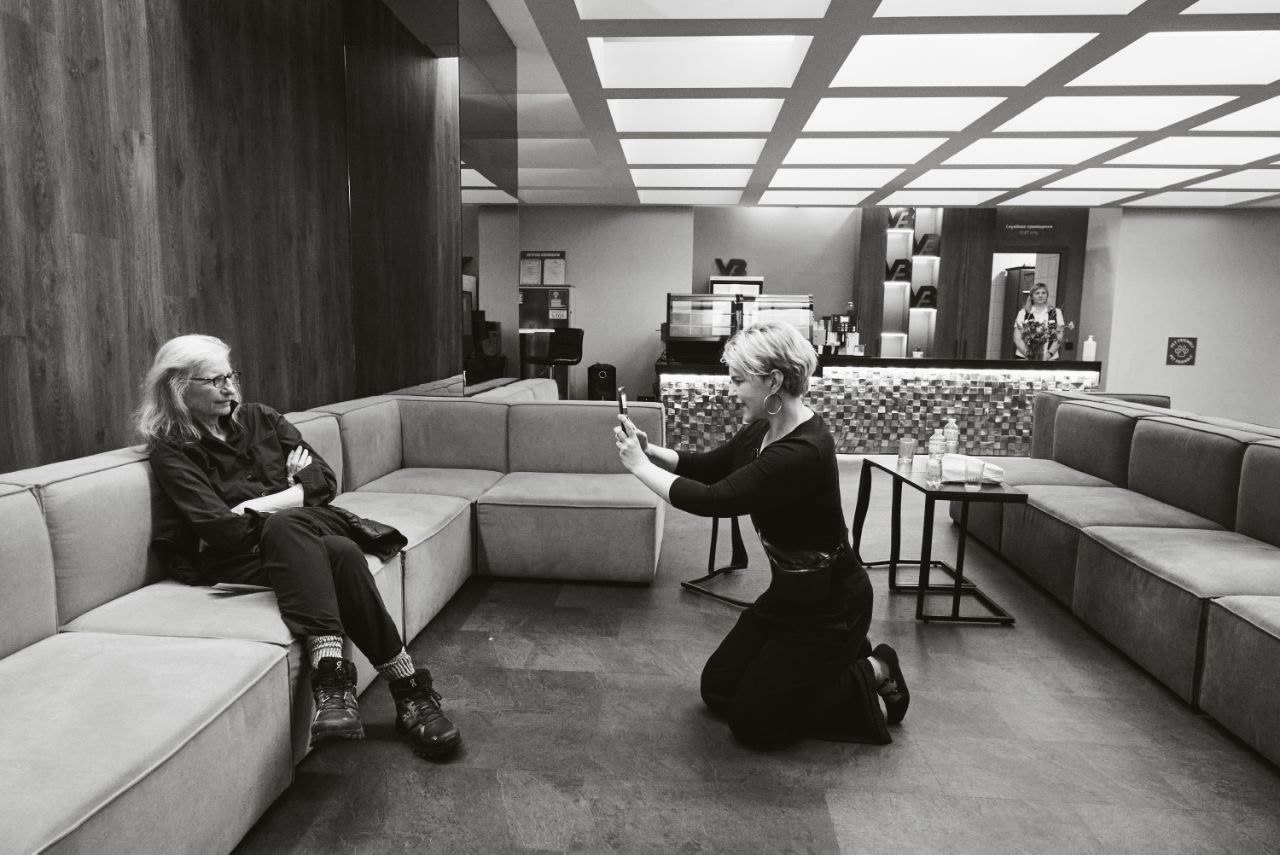
Mina Sorvino taking a photo of Annie Leibovitz. Photo: Mina Sorvino
Mina Sorvino taking a photo of Annie Leibovitz. Photo: Mina Sorvino
After Russian forces withdrew from the Kyiv region last spring, Mina went home, motivated by a desire to show friends and the wider world that Ukrainians keep living. Mina hoped that her photography would foster healing by allowing its subjects to look back at what has happened to them over the past year and be affirmed that they are alive and not scared. Over the last three months, she has launched quite a few creative art projects, including her first professional photobook. “I have my job, people order portraits, I engage in innovative projects, I live my new normal life with air sirens and shelters. But I’m at home,” she said. “I work voluntarily to contribute to the victory of my motherland.”
Published in December 2022
